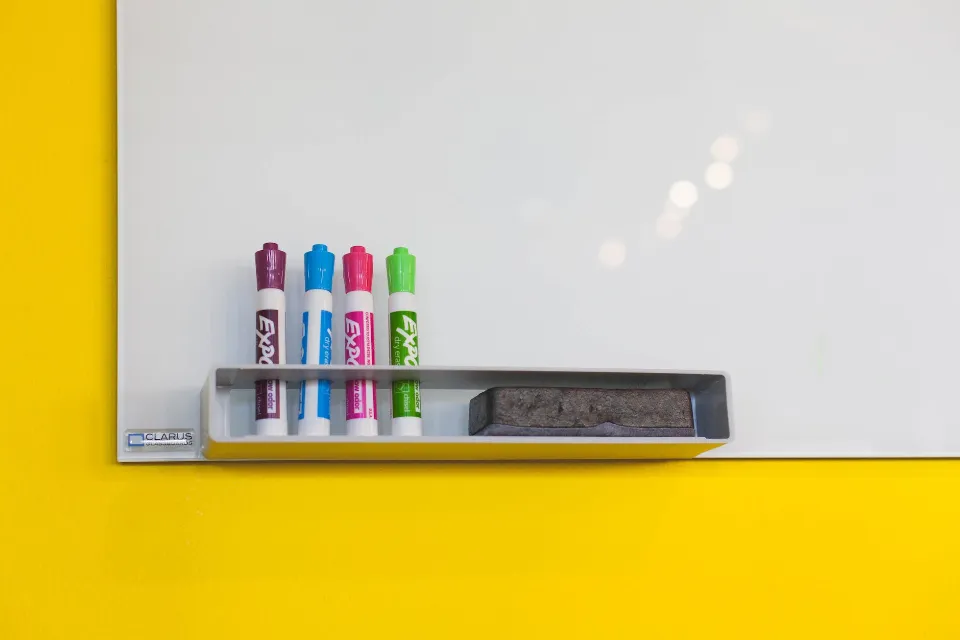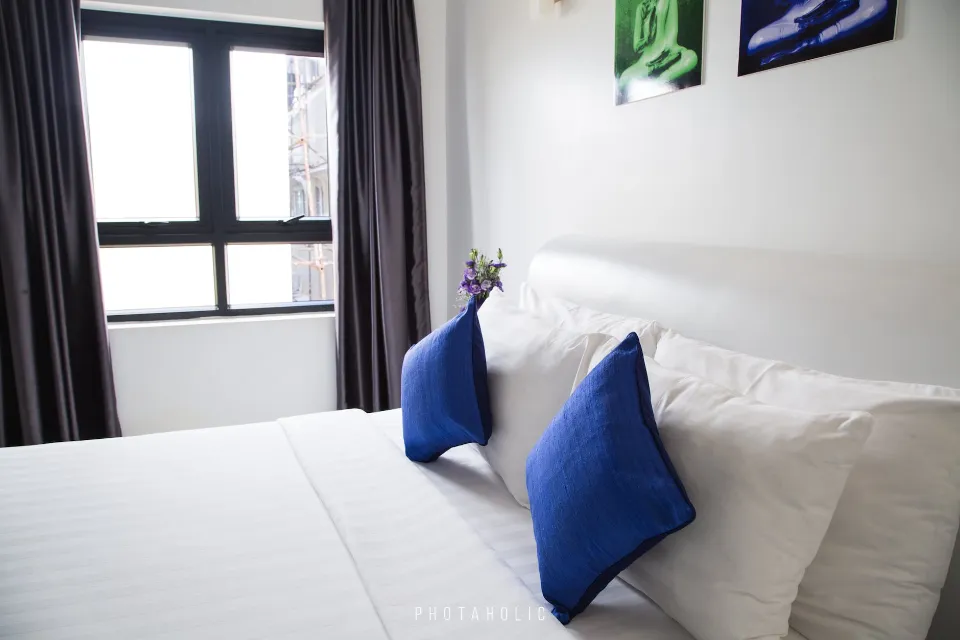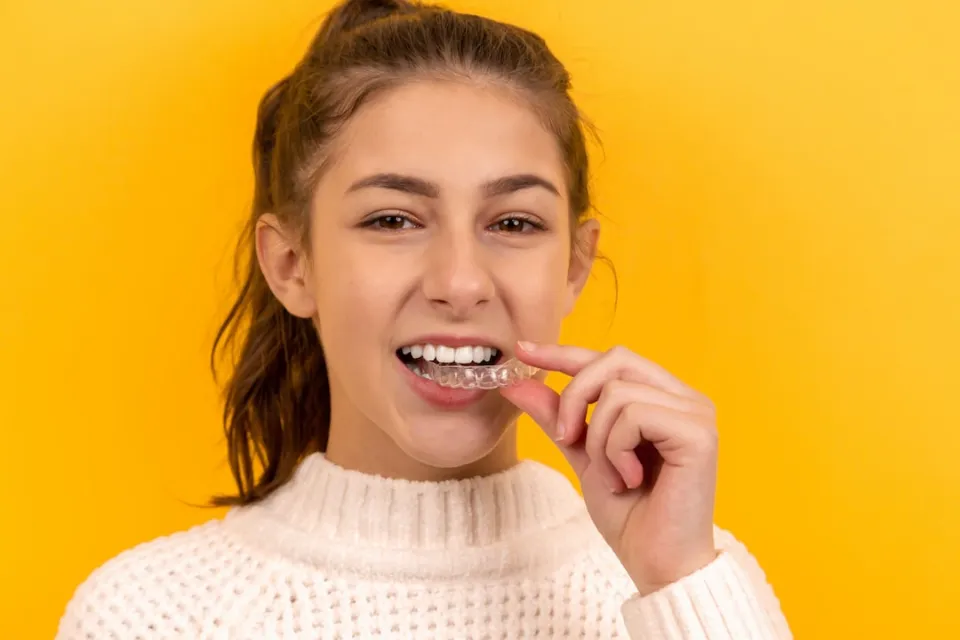Although they make a great communication tool, whiteboards can eventually become cluttered with permanent stains. Notes that can’t be erased are left behind when permanent markers and pens are used inadvertently. Removing dry-erase or wet erase marker right away is easy enough, but if the notes are left on the board too long, even these markers will leave stains.
Most whiteboards will come with a felt eraser that you can use to clean it, but it doesn’t always work. If your whiteboard has collected stains and marks from frequent use, check out these simple ways to keep it looking like new.

Table of Contents
Types of Whiteboards
There are three types of whiteboards:
- Glass: Glass boards are made of tempered glass and are regarded as the best whiteboards available. Despite being the priciest whiteboards on the market, they won’t streak or leave ghost writing behind.
- Porcelain: Porcelain whiteboards, like The Wall from Fluidstance, are made of steel with a white ceramic finish, much like the finishes on washers and dryers. These boards are more resistant to ghosting and damage from frequent cleaning.
- Melamine: A more porous laminate coating, melamine is the most affordable whiteboard material. Cleaning frequently will erode the coating and cause a lot of marker ghosting. Melamine boards shouldn’t be used for writing that will be left on them for a long time.
Both types of boards can be cleaned with similar cleaning agents, and melamine boards can be reconditioned to perform better.
How Often Should You Clean Whiteboards
Whiteboards should, if at all possible, be erased every day to help prevent ghosting. Cleaning up hand smudges, food splatters, and tape residue should be done immediately or frequently. Oily residues are detrimental to whiteboard performance. The frequency of use should be taken into account when cleaning and reconditioning whiteboards.
How to Clean a Whiteboard
Removing Stubborn Stains and Permanent Marks
With a brand-new dry erase marker, cover the stains. The marks that a pen and permanent marker leave on a whiteboard are irreversible and challenging to erase. Even dry erase marker that has been on the board for too long will stain it. Start by completely covering the stains with new dry erase marker before attempting to remove them.
Let the marker dry before using. This shouldn’t take more than a few seconds. Then, use a cloth or a whiteboard eraser to rub the marks away.
- The idea is that the fresh dry erase ink will help loosen and lift the stains off the board, so that when you wipe away the dry erase ink, the permanent marks will come off as well.
Repeat if necessary. Repeat the procedure to remove persistent stains and marks. Recover the marks with dry erase ink, let it dry, and then rub the board with a cloth or an eraser.
The board should be cleaned and dried. Clean the board to get rid of any leftover stains or marks after you have eliminated the enduring blemishes. Wipe the board ferociously with a damp cloth that has been cleaned with cleaner. Once the board has dried, remove any extra cleaner. Some of the most popular cleaners for a whiteboard are:
- Isopropyl (rubbing) alcohol
- Hand sanitizer
- Acetone or nail polish remover that contains acetone
- Dish soap and water have been combined.
- Orange cleaners (such as Goo Gone and Fantastik)
- Glass cleaner
- Baby wipes
- Pam or other spray cooking oils
- Aftershave
- Whiteboard cleaning solution like Expo, Solutions MB, or Quartet

Performing Everyday Cleaning
Clean the board every one to two days. If the marks haven’t been there for more than a few days, start with a whiteboard eraser, which will take off the majority of new ones.
With a wet solution, scrub the board thoroughly. Your preferred cleaning solution should be dampened on a clean cloth or sponge. When using harsh chemicals, make sure the area is well ventilated. Put some cleaning solution on the cloth, then rub the whiteboard firmly.
- It works well with a 50/50 solution of tap water and isopropyl rubbing alcohol.
The board should be cleaned and dried. Once the marker has been successfully removed, rinse your cloth or sponge with fresh water to get rid of the cleaning agent. Wring out the cloth and wipe the board down with the damp cloth. This will get rid of extra cleaning solution. Use a fresh, dry cloth to dry the board after that.
Do Not Use These Solutions to Clean Your Whiteboard
Despite claims to the contrary, the following substances shouldn’t be used to clean your whiteboard.
The application of the following remedies will result in additional staining and damage rather than the desired result of a blank, clean board on which you can write.
Toothpaste
Instead of mixing it with water and rubbing it on your whiteboard, you should let toothpaste stay where it belongs– in the bathroom.
You should be aware that toothpaste is abrasive even though it has been mentioned that toothpaste may be able to remove whiteboard markers.
Applying an abrasive cleaner repeatedly will gradually deteriorate your whiteboard and reduce its usefulness.
Bengay / Deep Heat
Like toothpaste above and comet below, Ben-Gay/Deep Heat is an abrasive agent that will in time corrode your whiteboard, resulting in the board no longer working.
It’s therefore recommended that you never use either products to clean your whiteboard.
Comet
Another abrasive cleaning agent formulated for much tougher stains, Comet should not be used on whiteboards if your goal is to keep them both fresh and clean.
Black Coffee Or Coffee Grinds
Coffee grinds may have cleaning potential, but they are a messy, abrasive, and truly last-resort option. Use these elsewhere besides your whiteboard.

Summary
A whiteboard is a very useful and entertaining tool that has a myriad of applications in a versatile array of business settings.
But unless you know how to clean the tool correctly, it doesn’t matter what you do. You can write on that spotless surface for years to come if you clean your whiteboard with the right supplies and at the end of each day.
FAQs
How Do You Make a Whiteboard Look New Again?
Isopropyl alcohol and a paper towel can be used to clean the entire board to solve both of these issues. When the paper towel starts to dry out or when it becomes heavily stained, change it. The whiteboard should feel smooth to the touch throughout if necessary.
What is the Best Homemade Whiteboard Cleaner?
Utilize a soft cloth and a non-abrasive solvent such as Goo Gone. White board compatibility and multipurpose cleaning capabilities of homemade window cleaner are both advantages. Combine two cups of water, 1/4 cup white vinegar, and 1/2 tsp. of liquid dishwashing detergent. Keep in a spray bottle.
Why is My Whiteboard Smudging?
The whiteboard painted surface will ghost and smudge if you try to clean it with a dirty eraser or cloth because some of the dry erase marker ink residue will remain on it. Use a fresh microfiber mitt, cloth, or towel for this purpose therefore always.
Can I Clean a Whiteboard With Dish Soap?
Generic Whiteboard Cleaner: An obvious choice, but very effective! Before using, spray a small amount onto a microfiber cloth. Mild Detergent and Water: Dawn dish soap works great with a bit of water to remove residue and built-up oils.





